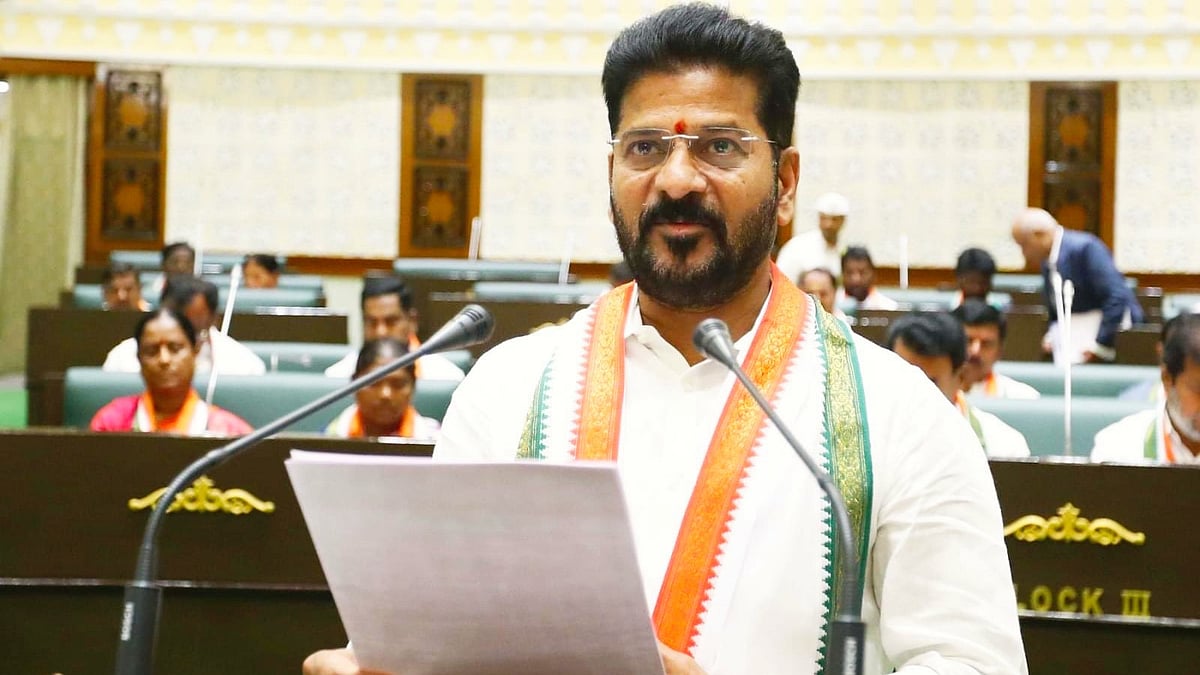Telangana Diary: Future cities, naval stations and secret pacts
Coming up at Mucherla in Rangareddy district, about 50 km south of Hyderabad, ‘Future City’ as it is tentatively named, is proposed as an ultramodern region, “more advanced than New York”

If chief minister A. Revanth Reddy’s plans work out, the Telangana state capital will soon have a fourth city.
Coming up at Mucherla in Rangareddy district, about 50 km south of Hyderabad, ‘Future City’ as it is tentatively named, is proposed as an ultramodern region, “more advanced than New York”.
“Future City will be India’s answer to the future. It will be India’s first Net Zero Carbon city, a hub for Artificial Intelligence, medical tourism, sports, software and pharma,” said the chief minister, who mooted the idea during the budget session of the assembly last month.
“First, it was the twin cities of Hyderabad and Secunderabad. In tune with the advancement of technology and the needs of the new generation, the city expanded to Cyberabad, which has grown into an information technology hub in the last two decades. It is time to expand the horizons of Hyderabad further,” he added.
The amenities of ‘Future City’ will include metro rail connectivity, speciality hospitals, a skill development university and sports infrastructure. In August, Reddy laid the foundation stone for the Young India Skill University block near Mucherla. The foundation stone for the Artificial Intelligence city will be laid in October.
The government has already held preliminary talks with the Board of Control for Cricket in India (BCCI) for the construction of an international cricket stadium. State IT minister D. Sridhar Babu said ‘Future City’ would be designed for net zero carbon impact, a city of truly global standards and processes. Senior journalist and analyst Ramakrishna Sangem believes that pushing ‘Brand Hyderabad’ and sustaining its image has become top priority for political leaders.
“It started with Telugu Desam Party president, N. Chandrababu Naidu during his first stint as chief minister between 1995 and 1999. He created a brand by designing Cyberabad and establishing the IT ecosystem, which attracted massive investments into Hyderabad,” Sangem pointed out.

Resistance to a second naval radar station
Environmentalists are up in arms against the proposed establishment of a very low frequency (VLF) communication transmission radar station by the Indian Navy in the Damagudem forest area of Telangana’s Vikarabad district, about 80 km from Hyderabad.
In January, the Congress government announced the transfer of 2,901 acres of forest land at Damagudem near Puduru village to the Indian Navy to set up the VLF station. State forest department officials also signed a memorandum of understanding (MoU) with the officials of the Eastern Naval Command (ENC).
An official statement from the chief minister’s office (CMO) said the Indian Navy chose Damagudem as a key base for establishing the VLF station because of its strategic location at about 250 feet above sea level, considered ideal for capturing signals.
‘The Navy uses a VLF communication transmission system to communicate with ships and submarines. This is the second such station in the country, the first one being INS Kattabomman Radar Station in Tirunelveli, Tamil Nadu, which has been serving the Navy since 1990,’ it stated, adding that the Damagudem area was identified by the ENC in Visakhapatnam as the most suitable location for the second such radar station.
In 2014, the union forest and environment department approved the Navy’s proposal. The Navy has paid Rs 18.56 crore for land conservation measures. However, land allocations were pending due to resistance from local environmentalists, who formed the Damagudem Forest Protection Committee to protest the colossal loss of forest cover, destruction of local flora and fauna and consequent degradation.
The committee filed a petition in the state high court in 2018 opposing the establishment of the naval radar station. The high court, which initially stayed the project, later vacated the stay and asked the Indian Navy to take all precautions in accordance with the conditions laid down by the state government.
State forest minister Konda Surekha was emphatic in his assurance that the government had allocated the land after conducting due diligence. “The Union ministry of environment and forests gave the clearance after examining all aspects. The high court rejected the claims of tree cutting. There is absolutely no threat to the local population or the environment,” Surekha said.
Baffling silences and secret pacts
From being hailed as the architect of Telangana state to presiding over his party’s back-to-back electoral rout, K. Chandrashekar Rao’s fall has been dramatic and swift. Not too long ago, the two-time chief minister had an aura of invincibility and even rebranded his Telangana Rashtra Samithi (TRS) Bharat Rashtra Samithi (BRS) to reflect his national political ambitions.
With the party losing the assembly elections in November 2023 and then drawing a blank in the recent Lok Sabha elections, that was not to be. A spate of desertions has hit the BRS camp over the last few months with several legislators and senior leaders crossing over to the ruling Congress.
An intriguing consequence of this political setback is that KCR, as the BRS supremo is popularly known, is incommunicado. Once known for his eloquent public speeches and witty comebacks, he has neither been seen nor heard for months.
Confined to his farmhouse in Erravelli on the city outskirts, KCR is keeping himself away from party activity and generally refraining from making any statements. His silence has baffled an already demoralised party cadre and triggered speculation over a possible political deal with the BJP to fight the ruling Congress.
A spate of investigations into the damages to the Kaleshwaram irrigation project (a flagship scheme of the previous government), irregularities in the power sector and phone-tapping episodes during the BRS regime are other reasons for this major setback.
“He was also shattered by the arrest and imprisonment of his daughter Kavitha in the Delhi liquor policy case. His main concern is to secure her release. Any truck with the BJP will surely involve this factor,” said senior political analyst and author Ramesh Kandula.
After spending five months in Tihar jail for CBI and ED cases related to the Delhi excise policy scam, Kavitha was granted bail by the Supreme Court. The Congress described the development as the outcome of a secret understanding between the BRS and the BJP.
Telangana Congress working president Mukesh Goud claimed that the Enforcement Directorate facilitated bail following BRS leaders K.T. Rama Rao and T. Harish Rao’s alleged meetings with senior BJP leaders in Delhi. “It is the beginning of a merger process,” Goud said. “The two parties have struck a secret pact.”
WHO nod for oral polio vaccine
A novel oral polio vaccine (OPV) developed by the Hyderabad-based vaccine and pharmaceutical company, Biological E. Limited, has been granted prequalification (PQ) status by the World Health Organisation (WHO). The nOPV2 is a next-generation oral vaccine developed to combat vaccine-derived Poliovirus type 2 (cVDPV2) outbreaks. Biological E. has received a grant from the Bill and Melinda Gates Foundation to assist in meeting growing global demand.
Mahima Datla, the company’s managing director, said that WHO prequalification was a significant milestone. This vaccine has been specifically designed to address concerns about vaccine-associated paralytic polio (VAPP), which occurs in approximately 2 to 4 cases per million births, with the traditional OPV due to the vaccine virus reverting to a virulent form, she added. Biological E. has collaborated with the Indonesian firm PT Bio Farma (PTB), the first manufacturer of the nOPV2 vaccine to receive the WHO prequalification.
Extensive clinical trials have rigorously evaluated the safety and immunogenicity of nOPV2, leading to promising results published in The Lancet (2019–2024). The vaccine’s real-world deployment in outbreak regions has shown that it can significantly decrease the incidence of cVDPV2 outbreaks.
The company has received approval from Indian regulatory authorities to manufacture the vaccine for export purposes.
Follow us on: Facebook, Twitter, Google News, Instagram
Join our official telegram channel (@nationalherald) and stay updated with the latest headlines